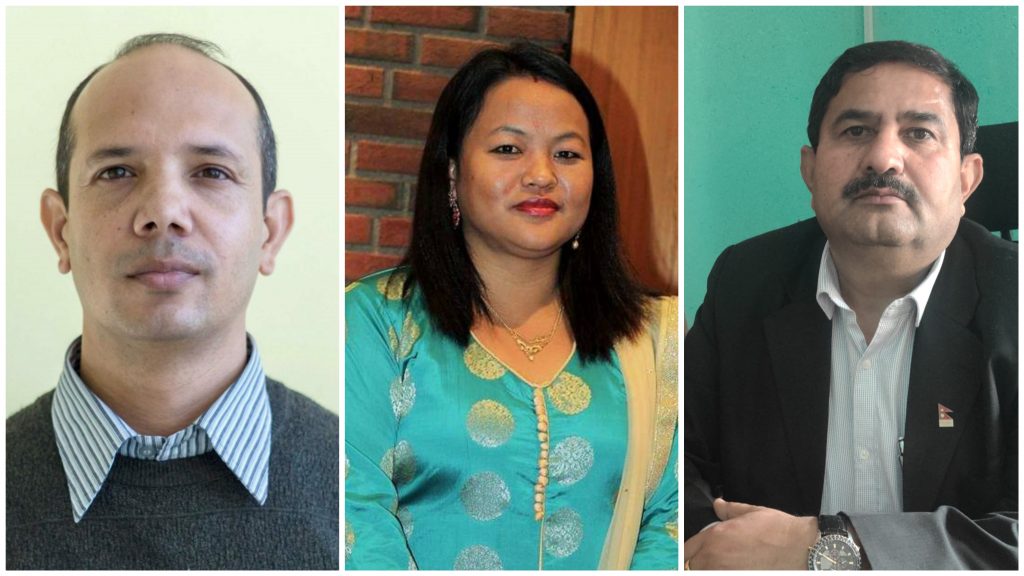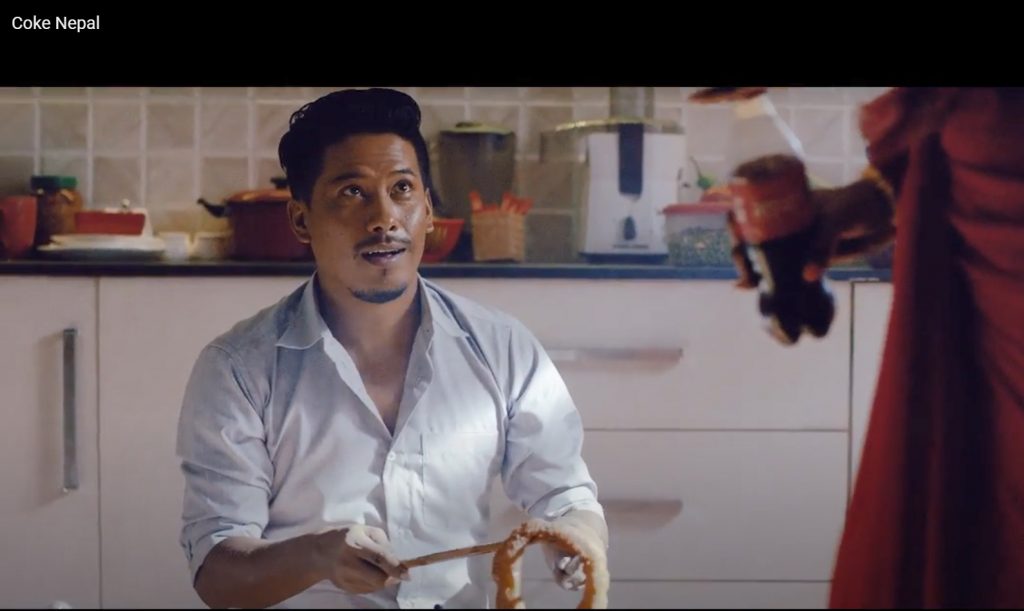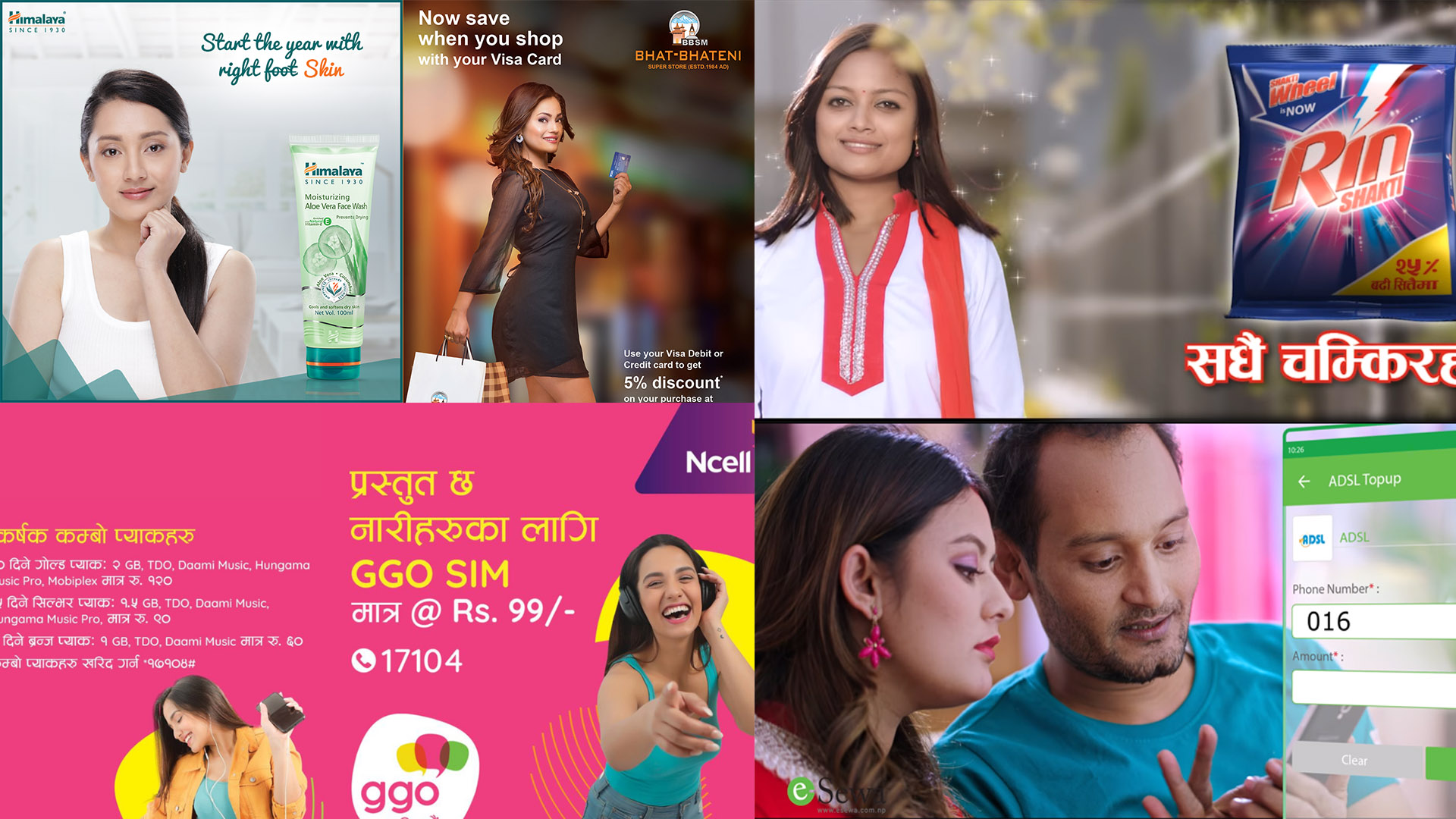Jit Bahadur Magar, a 23-year-old chartered accountancy student in Kathmandu, always wants to help his mother. “These days, she is in her early state of expanding her business and is asking me how she can advertise her business online.”
When his mom asked for help initially, Magar remembered an advertisement of eSewa that featured a couple, in which the woman is complaining of not being able to get an internet connection and the man instantly recharges his internet balance.
Thinking critically, Magar, however, found this advertisement problematic albeit appealing. “But, it is the way my life is. I am inept in technology, but my sister works in the field of digital marketing. But still, my mother prefers to ask me about it rather than asking my sister.”
Experts and stakeholders think there are many people in Nepal like Magar’s mother, both men and women, who have been frequently reminded of traditional gender roles and stereotypes by advertisements that are barring them from finding better solutions to problems of their life.
Major problems
A visiting faculty at Kathmandu University School of Education, Lina Gurung, says women have always been used, or rather misused and overused, in Nepali advertisements. Gurung, who authored a paper ‘Portrayal of Women in Print Media: A Nepali Context’ in 2016, shares, “Since back in the day, even leading print media like Kantipur have used pictures of actresses unnecessarily, without context in the ear panels while other advertisements dress women in short skirts and skin-revealing clothes to attract male readers.”
Another researcher and associate professor at Kathmandu School of Law Kapil Aryal, who wrote ‘Projection of Female Body in Advertisements: Gender Perspectives in Nepalese Context’ in 2008, also observes that women were objectified in pornographic forms with short, revealing clothes, especially in advertisements of alcohol and vehicles.

After being a student of human rights and gender studies, Aryal says, he started noticing all that was wrong with the Nepali advertisement industry. “Before my degree, I had no clue about the unjust scenario, however, I started noting a lot of gender biases and gender-based stereotypes that run deep through almost all of the advertisements.”
For example, in advertisements, women are stereotyped as housewives, mothers, wives and daughters-in-law who spend their time in the kitchen or in cleaning and tending to other people’s needs. Aryal also adds that women are more often seen as passive, dull, information-receiving and unintelligent consumers in the advertisements of tea or washing powders.
“Many Indian advertisements were dubbed in the Nepali language, and with Nepal and India sharing similar values and patriarchal social structures, those advertisements where women were in passive roles while men in stronger, bolder roles only further conformed to the notion that there is a gender imbalance,” adds Aryal.
Even the advertisers have also identified the problems. Advertising Association of Nepal (AAN) President Som Prasad Dhital says Nepalis have so long been living in a patriarchal society and hence they are bound to show its impacts. “Making a distinct analysis if the advertisements are a reflection of our society or exaggeration is difficult; it is both. The advertisements are also reassuring the practice of the same stereotypical biases in society.”
Impact on men
When stereotypes are discussed, one immediately thinks that it is just the women that are at the receiving end. It is rather easy to ignore any plight of their male counterparts.
But, Aryal says men also suffer although it is not easily visible among them. “Men are shown in powerful roles, in which they boast their position, so they also tend to show similar behaviours in society.”
Gurung adds men are also objectified in advertisements and the stereotyping is equally harmful although less discussed. “Men cast in advertisements of perfumes, undergarments or cars have to be macho-looking with toned bodies. So, there is a passive pressure on the male population to look and behave that way as if any other way is not acceptable.”

Men are prone to sign up for gymnasiums, taking steroids, following strict diets and suppressing their emotions to live up to that society-built image, says Gurung. Likewise, Aryal says they are obligated to be the providers of the family and have a marriage and a family with an economically strong position in society. All notions are restated in the advertisements, they add.
Inefficient change
Body positivity, women empowerment and non-binary gender equality issues have been advocated a lot in these past few years. But, stakeholders say advertisements have seen insufficient changes and they still have a long way to go.
One of the significant positive changes people have seen, she says, is Unilever dropping ‘Fair’ from Fair & Lovely and rebranding the product [as Glow & Lovely]. “The fairness product was portrayed as an irreplaceable tool for women to get married, get a job, be successful or famous which sent the wrong message in all its advertisements. It promised to promote women empowerment and showed women in stronger roles, but they just needed the product to be recognised.”
Gurung adds, “Miss Nepal World 2018 Shrinkhala Khatiwada being cast in a cement advertisement where always men have been so prominent is also a sign of change. Her real-life academic credentials add value to the advertisement and also she has become a role model for many young women.”
While researchers and stakeholders agree there are more creative advertisements now, they also agree problems are not all gone. “In the past, gender stereotypes were more distinct. Today, approaches have changed to more family-oriented ads. There will be one woman in a strong, information-giving role whereas other roles are still the same,” Gurung says, “Still, there are teenage girls going to beauty parlours, mothers in the kitchen and fathers reading a newspaper, which is in line with the same kind of stereotypes.”
Aryal complains, “Men sharing the load, doing household chores– in society and in advertisements–are still treated as a matter of joke, a subject of lesser masculinity. Even if they want to do it, they do so in hiding or in nuclear families, never openly in a joint-family situation.”

He further states, “Without denying the progress, we have to realise that our advertisements still lack the representation of single fathers who handle the work and home, the LGBTQIA+ community in commanding roles, or even families with working parents. All of them are as much as a part of our society as cooking moms and newspaper-reading dads.”
On this, Dhital adds, “We know there is a need for change; we realise the advertisements are problematic. But, changing it is hard because the clients, even the biggest names, still demand the same kind of story in their advertisements. And we all–producers, clients, consumers– might be victims of the same old patriarchal society we have grown up in.”
If the industry ever intends to change this, Aryal suggests, people should start treating and accepting each other as individual humans. He says it should begin even before birth, along with the non-binary way of celebration of birth and assigning non-gendered works or roles while bringing children up.
Gurung says educating the younger population is the best way. “It might take a bit of time to change the scenario but with the internet access, active campaigns and better policies, we can expedite the change.”
Meanwhile, Dhital says his organisation will continue to advocate for the need for better, gender-neutral advertisements, and address any kind of stereotypical issues that arise in the Nepali advertisement industry.





















